SPECIAL REINFORCING STEEL FOR BRIDGES AND TUNNELS
Cost reduction through extended service life of structures
In today's society, commuting for work and leisure, for long and short distances, in any weather, has become a normal part of everyday life. It is expected that the necessary infrastructure, including bridges and tunnels, are in good condition and free of traffic jams, regardless of the season. In winter, this requires extensive use of de-icing agents. In Germany, up to 100,000 tons of de-icing salt are used daily in winter, which corresponds to approximately 0.5 tons of de-icing salt per kilometer in the event of a single ice rain event.
Urgent need for action: High refurbishment costs for bridges and tunnels exposed to chloride-induced corrosion
The chlorides contained in the spray water and spray mist of these de-icing agents are the enemy of any steel reinforcement. Depending on their concentration, they lead to undesirable corrosion of the reinforcing steel and thus to costly repairs. As recently as 2007, 66% of all bridge damage was due to chloride-induced corrosion. In many countries bridge repair has become one of the most urgent challenges to ensure congestion-free traffic flow.In Germany alone, 4,800 bridges or 12% of all road bridges in the federal trunk road network have a condition rating > 3.0 and are therefore assessed as insufficient or inadequate. According to the Federal Highway Research Institute (BASt), repair measures are therefore to be planned for these bridges in the near future. In France more than 800 or 7% of all bridges. Repair measures must be planned for the near future.
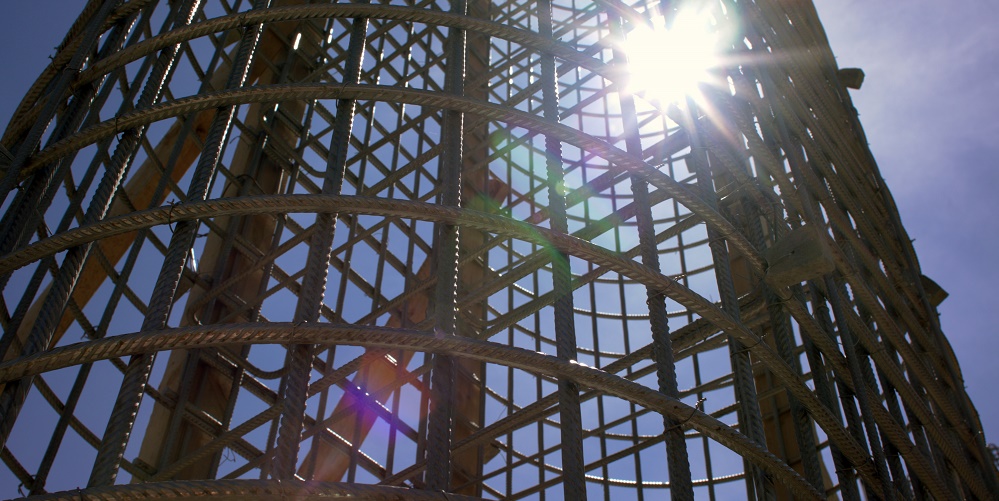
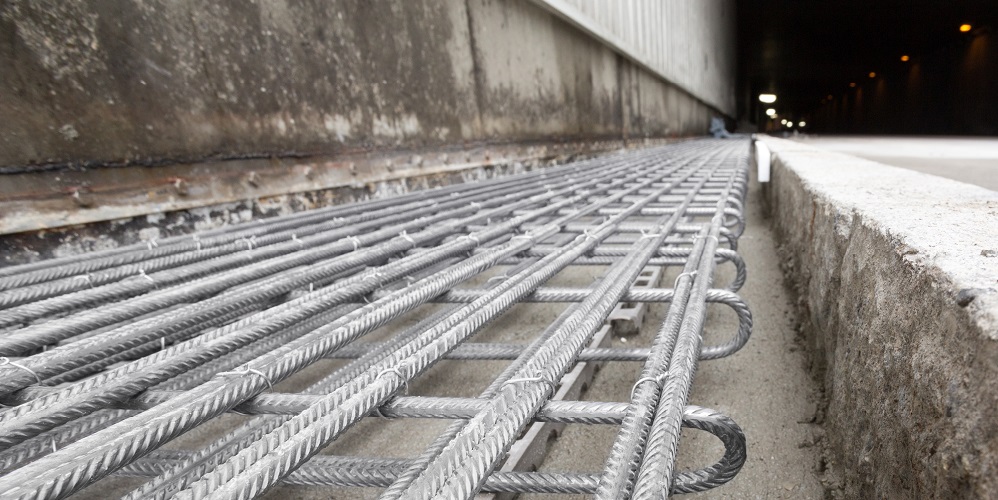
Bridge damage in Germany and France in March 2020
Reasons for damage to bridge structures
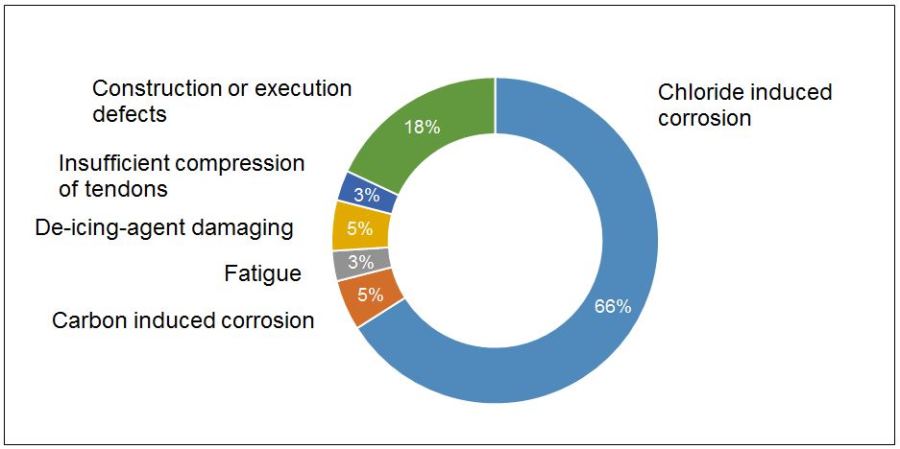
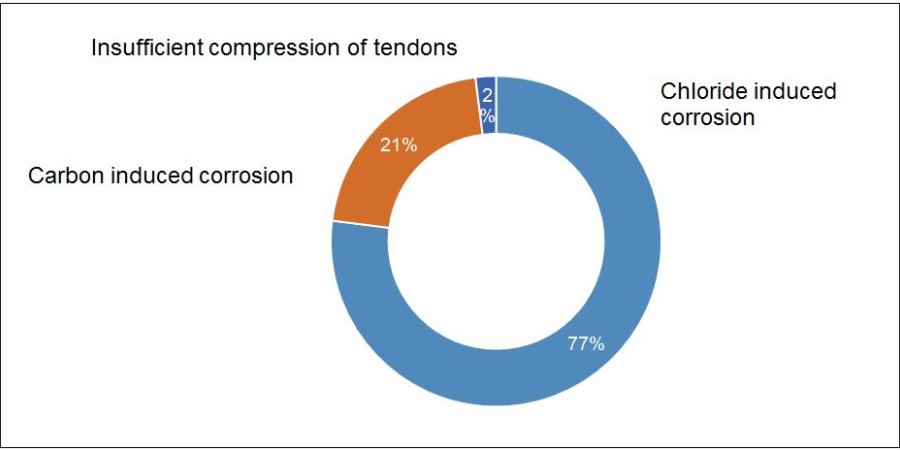
The wrong reinforcing steel affects the service life
Chloride-induced corrosion leads to high material loss and thus reduces the steel cross section. This process is not visible from the outside and poses a major threat to the stability of the structure: The reduction of the steel cross section reduces the load-bearing capacity of the reinforcement and in extreme cases leads to a risk of collapse of the entire structure. When conventional reinforcing steel is used, the desired service life of the components is often not achieved, depending on the chloride concentration. The consequences are unintentionally early but necessary repair measures, which sometimes even exceed the production costs. Additional expenditure for repair work, especially for parts that are difficult to access, and the economic damage caused by traffic jams or road closures are not yet taken into account.
Applications in bridge and tunnel construction
Stainless steel reinforcement in bridge and tunnel construction
Stainless steel reinforcement and fastening applications in tunnel construction
Fixings for false ceilings in tunnels
In order to improve the reliability and durability of structures while taking into account the overall cost, the choice of the most suitable material is crucial. As the amount of alloys increases, not only does the corrosion resistance of stainless steel increase, but so do the material costs. The aim is to select the appropriate steel reinforcement depending on the expected chloride load per component and thus the necessary corrosion resistance (Ccrit). The following table supports the decision making for the suitable material. Top12 or UGIGRIP is used depending on the level of the chloride load applied.
| Steel product | Concentration of chlorides [M.-%/z] in alkaline concrete at steel layer |
Concentration of chlorides [M.-%/z] in carbonated concrete at steel layer |
||||||||||||
| ≤ 0,5 | ≤ 1,0 | ≤ 2,0 | ≤ 2,5 | ≤ 3,0 | > 3,0 | ≤ 0,25 | ≤ 0,5 | ≤ 0,75 | ≤ 1,00 | ≤ 1,25 | > 1,50 | |||
| B500B | (1.0439) | |||||||||||||
| Top12 | (1.4003) | |||||||||||||
| UGIGRIP® | (1.4062; 1.4362; 1.4462) | |||||||||||||
| Corrosion risk with use of respective product | none | low | high | |||||||||||
Life cycle costs as a basis for an economic calculation of civil engineering structures
The target lifetime of bridges and tunnels is a critical factor in the financial calculation of construction costs and ultimately life cycle costs. The life cycle costs represent the sum of the construction costs and the operating costs (inspection, maintenance and repair). Forecast and thus calculated lifetimes should at least ensure the target life of e.g. 100 years, but should not exceed it excessively. Experience shows that structures show threatening signs of reinforcement corrosion long before reaching the target service life. Necessary and above all unintentionally early and sometimes even recurring repair measures often exceed the production costs. In order to compare different design variants, it is therefore advisable to use the life cycle costs as a decision criterion instead of the manufacturing costs.
To a certain extent, existing standards, e.g. in Germany, already take into account the durability of structures against chloride-induced reinforcement corrosion. They assign concrete coverings and requirements for the concrete composition depending on the exposure class of the building component. However, experience from numerous examples shows that additional measures for highly chloride-loaded components of bridges and tunnels require additional protection measures.
Know your enemy: Locate problem areas
In order to keep the costs of building and repairing infrastructure predictable, the use of stainless steel reinforcement can make all the difference. Due to its alloy content, stainless reinforcing steel has a higher corrosion resistance than conventional reinforcing steel. Understanding the problem area of infrastructure structures is crucial to finding the balance between construction cost and durability. Particularly exposed components of bridges and tunnels are the following:
- Bridge caps
- Console heads
- Central bridge pier
- Bridge abutment
- Bridge superstructure
- Bridge transition slab
- Tunnel emergency walkways
- Tunnel inner walls
- Retaining walls
- Galleries
Top12: The ideal solution for reinforcement
Reducing costs while ensuring high durability and robustness - a challenge that is becoming increasingly common in the planning and repair of infrastructure buildings. With our Top12 stainless reinforcing steel we offer the answer. Top12 increases durability, offers practical design benefits and keeps costs down.
Conclusion: Taking into account the aspects costs, durability, constructional advantages, Top12 comes off best in the life cycle cost study of IB Schießl Gehlen Sodeikat.
| Component | Steel grade | Chloride
contamination [M.-%z] (Cs,Δx) |
Concrete
layer [mm] (µ/σ) |
Binder | Calculated lifetime [a] | Target lifetime [a] | |
| Bridge caps | non-alloy steel | 3,5 | 50 / 6 | CEM II/B-S | 14 | 50 | |
| Top12 | >100 | ||||||
| Bridge center columns | non-alloy steel | 3,0 | 55 / 8 | CEM II/B-S | 73 | 100 | |
| Top12 | +30kg/m2 FA | >>100 | |||||
| Tunnel emergency walkways | non-alloy steel | 5,0 | 50 / 6 | CEM II/B-S | 10 | 50 | |
| Top12 | 55 | ||||||
| Tunnel interior walls | non-alloy steel | 4,0 | 60 / 6 | CEM II/B-S | 68 | 100 | |
| Top12 | +30kg/m2 FA | >>100 |
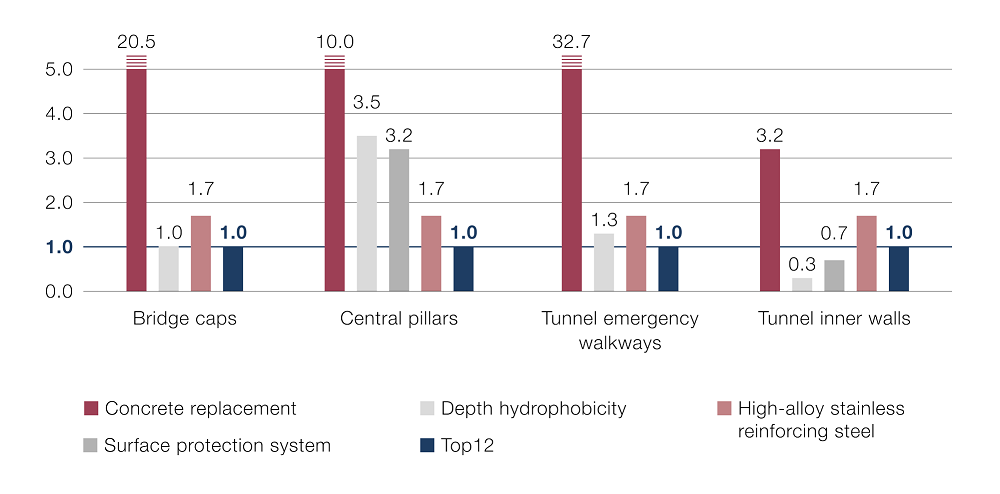
Reference projects with our steel solutions
Munich East motorway junction: bridge renewal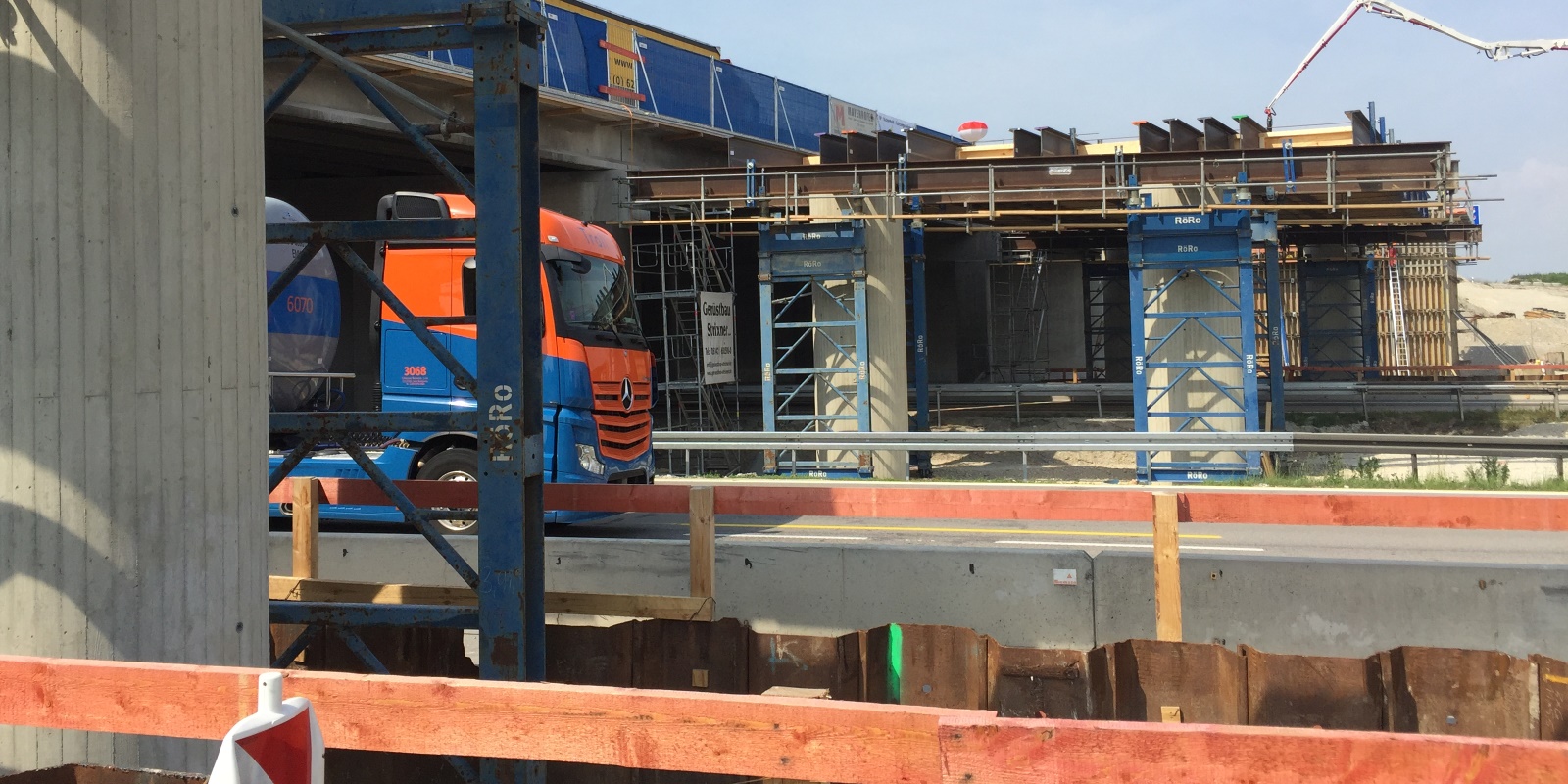
Object: Motorway junction München-Ost, DE
Application: Column
Product: Top12
Realized: March 2017 to November 2019
> Download PDF Document
> Discover all bridge reference cases
A96 motorway: modernisation of the Etterschlag-Eching tunnel
Within the scope of the safety retrofitting of the Eching and Etterschlag tunnels as part of the A96 Lindau-Munich motorway, the slotted channels and emergency walkways had to be renewed or repaired due to the existing corrosion damage. Measurements during the condition assessment of the structures showed chloride contents at the level of the reinforcement after only 20 years of operation, which were significantly above the permissible limit values for B500B (Ccrit). In order to prevent future reinforcement corrosion, the emergency walkways were equipped with optimized concrete technology and the low-corrosion Top12 reinforcing steel.
Object: Tunnel Eching und Etterschlag, DE
Application: Emergency walkways
Product: Top12
Realized: 2016
> Download PDF Document
> Discover all tunnel reference cases
